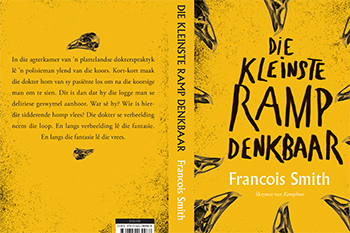“The success of my previous novel, Kamphoer, greatly contributed to the fact that I was able to get a job at the UFS, especially to teach creative writing,” says Dr Smith, who is currently a Lecturer in Afrikaans and Creative Writing at the University of the Free State (UFS). He does not want to divulge too much about the new book, but says “the story is about a medical doctor in a typical Free State town in whose consulting room a policeman is lying all but senseless from a high fever one morning.”
The title of the book implies that we all have some kind of disaster fantasy and that the disaster mentioned in the book exists largely in the imagination of the main character – the doctor; that it is something he wants to see. “I am not going to reveal it completely, because in a sense the book is a search for what the disaster is really about,” says Dr Smith.
For any author, the takeaway message of a book is important. It should touch the lifestyle of the reader in some way. Dr Smith wants Die kleinste ramp denkbaar to say something meaningful about life here in South Africa – “about what makes life here meaningful, or what it is that makes it possible for us to live in the midst of what we experience as a total disaster.”

Creative Writing a UFS success story
Creative Writing, presented by the Department of Afrikaans and Dutch, German and French, is one of the many success stories that the department is proud of. Dr Smith is part of the formidable team driving the course; also part of the team is Prof Henning Pieterse, a Hertzog Prize-winning poet.
The success of the course is not only evident from the number of applications, but also from the stream of publications from their stable. “There will be three this year; in addition to mine, there was also the collection of short stories, Luistervink, by Madré Marais, and later this year Anton Roodt’s novel, Weerlose meganika, will be published,” says Dr Smith.
Die kleinste ramp denkbaar was published by Tafelberg Publishers and is part of the many success stories of the department’s Creative Writing course.
Watch short video clip below: